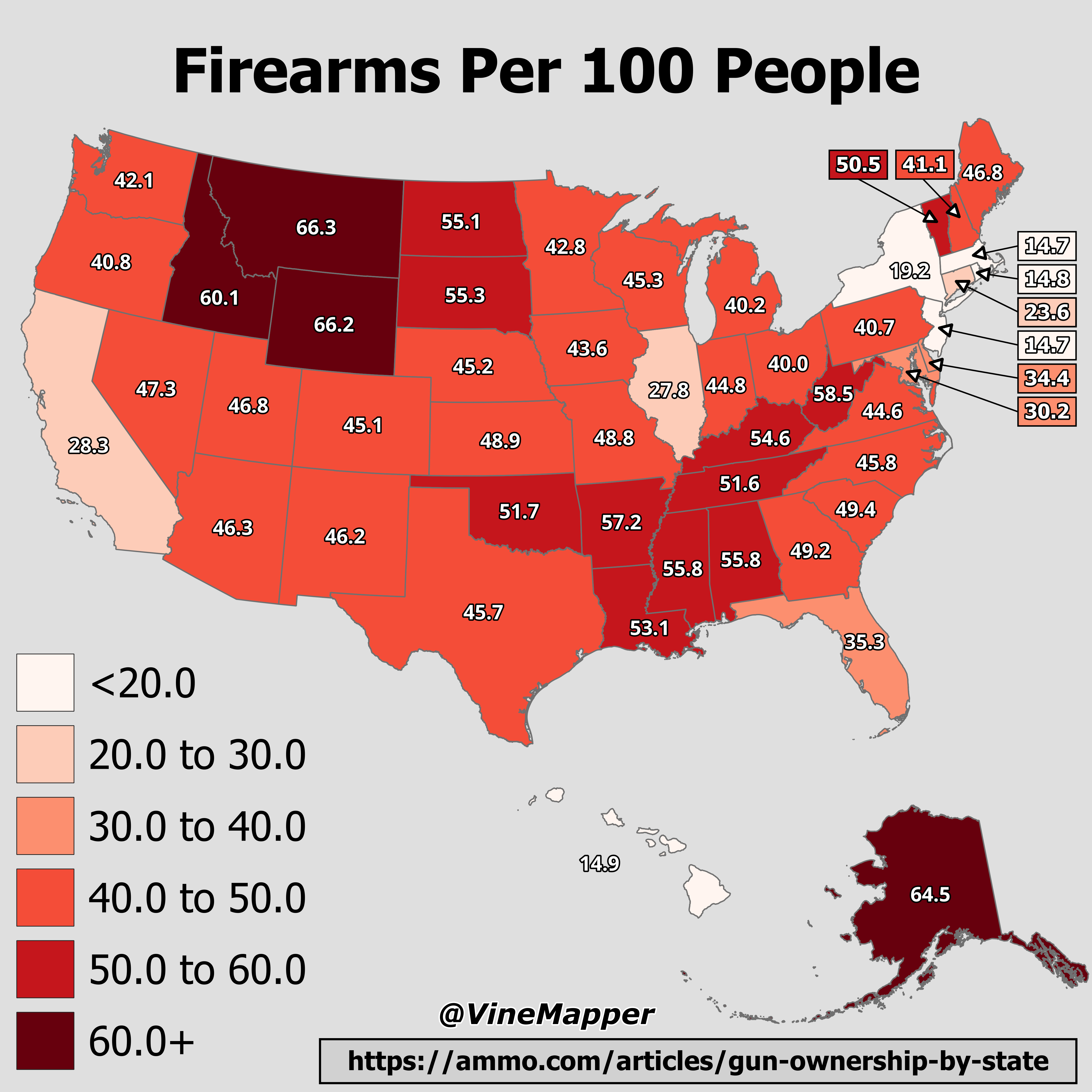Firearms Per 100 People Map


Marcus Rodriguez
Historical Geography Expert
Marcus Rodriguez specializes in historical cartography and geographic data analysis. With a background in both history and geography, he brings unique...
Geographic Analysis
What This Map Shows
The "Firearms Per 100 People" map provides a visual representation of the prevalence of civilian firearm ownership across various countries. This map highlights the number of firearms in civilian hands relative to the population, offering insights into global trends in gun ownership, cultural attitudes towards firearms, and the implications for societal safety and governance. As we delve into this topic, it’s crucial to understand how these figures reflect not just numbers but the complex interplay of history, culture, and legislation in different regions.
Deep Dive into Firearm Ownership
Firearm ownership is a multifaceted issue that encompasses legal, cultural, and economic dimensions. According to recent estimates, there are over 1 billion firearms in civilian possession worldwide, with the highest rates found in countries like the United States, where civilian ownership exceeds 120 firearms per 100 people. This statistic is not merely a reflection of personal freedom or self-defense rights; it stems from a long history of gun culture that has been ingrained in American society since its inception.
Interestingly, the reasons behind firearm ownership can vary significantly across different regions. In the U.S., the Second Amendment guarantees the right to bear arms, leading to a deeply rooted gun culture that promotes the idea of self-defense and personal liberty. In contrast, countries like Japan, with stringent gun control laws, exhibit ownership rates of less than 1 firearm per 100 people. Here, the cultural perspective leans towards viewing firearms as dangerous and unnecessary, emphasizing public safety over individual ownership rights.
Moreover, the implications of these ownership rates extend beyond personal rights. High rates of firearm ownership often correlate with increased gun violence and crime. For example, countries with higher firearm prevalence, such as Brazil and Mexico, face significant challenges with gun-related violence, posing questions about the effectiveness of gun control measures. Conversely, regions with lower ownership rates, such as many European nations, tend to have stricter regulations, which contribute to lower gun violence incidents.
What's fascinating is how firearm ownership rates can also be influenced by socio-economic factors. Research shows that in countries with higher income inequality, there tends to be a rise in gun ownership as individuals may feel the need to protect themselves from perceived threats. Similarly, political instability or conflict can drive up firearm ownership as citizens seek to safeguard themselves.
Regional Analysis
When analyzing the map, North America stands out with the highest firearm ownership rates, particularly in the United States and Canada. The U.S. leads globally, while Canada, with a more regulated approach, maintains a lower yet significant rate of around 34 firearms per 100 people. This disparity highlights differing national attitudes towards gun ownership and regulation.
In contrast, Europe presents a mixed picture. Countries like Switzerland and Finland have notable firearm ownership rates—around 27 and 32 firearms per 100 people, respectively—largely due to traditions of hunting and sport shooting. However, nations such as the United Kingdom exhibit very low ownership rates (approximately 6 per 100), primarily due to strict gun control laws established after high-profile incidents of gun violence.
Looking at Asia, Japan and South Korea show remarkably low rates of firearm ownership, less than 1 per 100 people, reflecting their strict regulations and societal norms that prioritize safety and collective wellbeing over individual gun ownership. Meanwhile, in regions experiencing conflict, such as parts of the Middle East and Africa, firearm ownership can be skewed due to the prevalence of militias and armed groups, complicating the civilian landscape.
Significance and Impact
Understanding firearm ownership rates is crucial not only for policymakers but for society as a whole. High ownership rates can indicate a society's trust in individual rights but can also pose significant risks related to gun violence and crime. Countries grappling with high firearm prevalence often face challenges in law enforcement and public safety, leading to calls for reform and stricter regulations.
As we look to the future, trends in firearm ownership are also evolving. With growing discussions around gun control following mass shootings and violent crime, many nations are reconsidering their policies. For example, countries that previously had lenient laws are now tightening regulations, while others are debating the balance between personal freedom and public safety.
In conclusion, the "Firearms Per 100 People" map serves as a vital tool for understanding the complexities of firearm ownership worldwide. It reflects not just numbers but the deeper societal values and challenges that come with it. As global conversations about firearms continue to evolve, this map underscores the importance of regional context in shaping policies that promote safety and respect individual rights.
Visualization Details
- Published
- October 16, 2025
- Views
- 20
Comments
Loading comments...